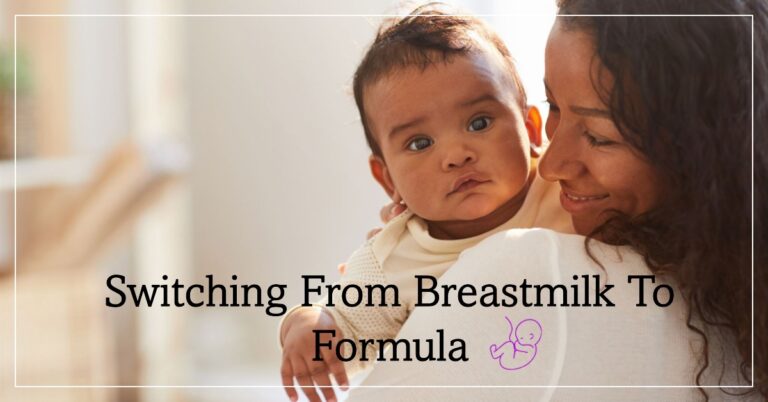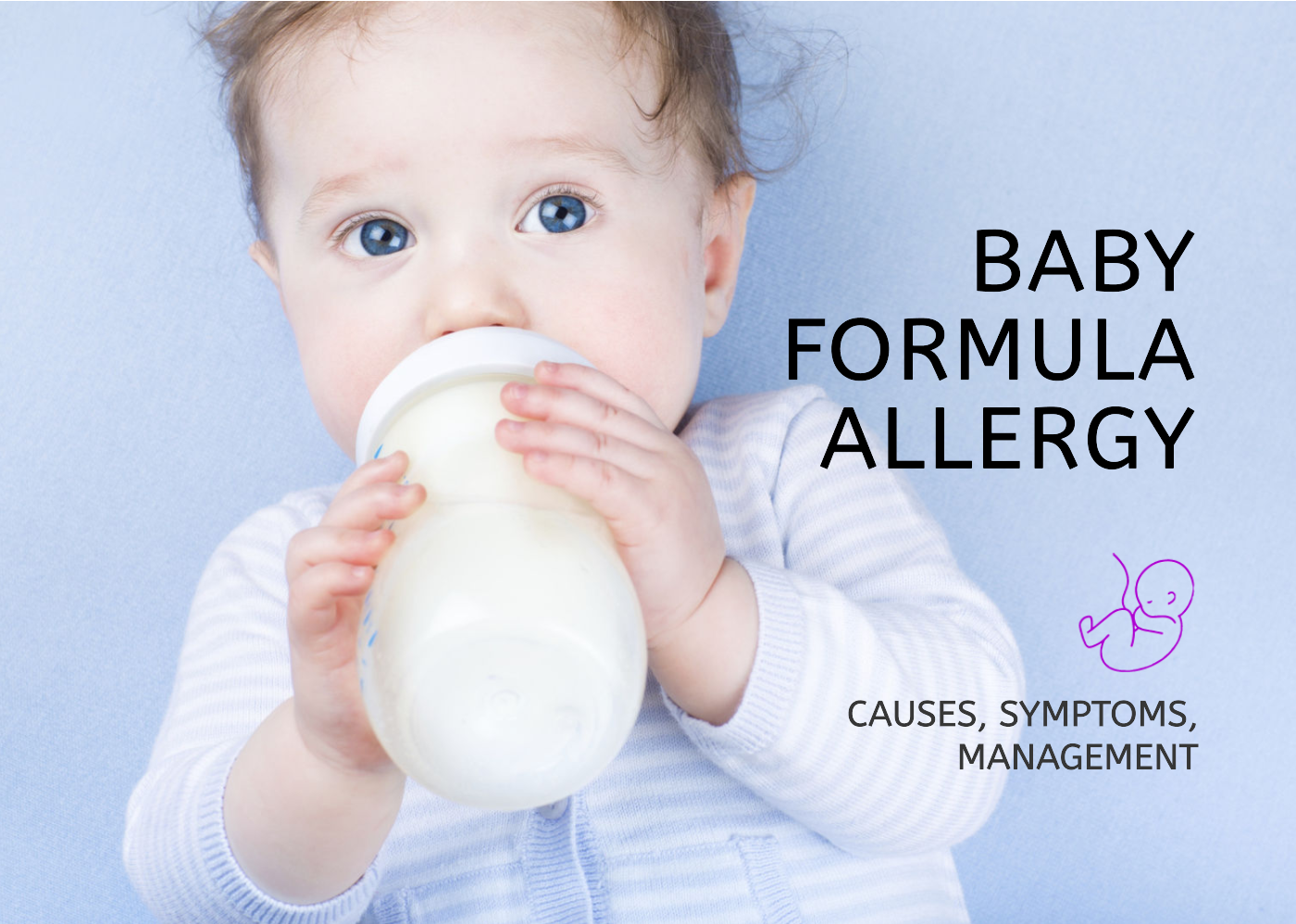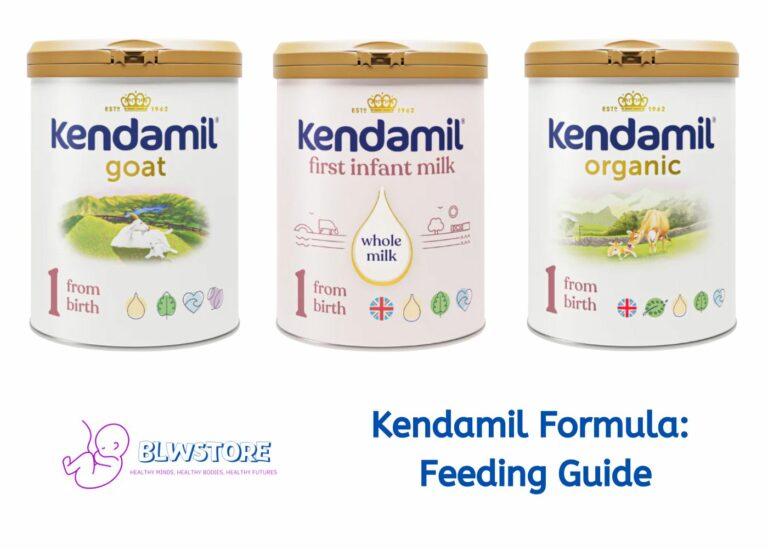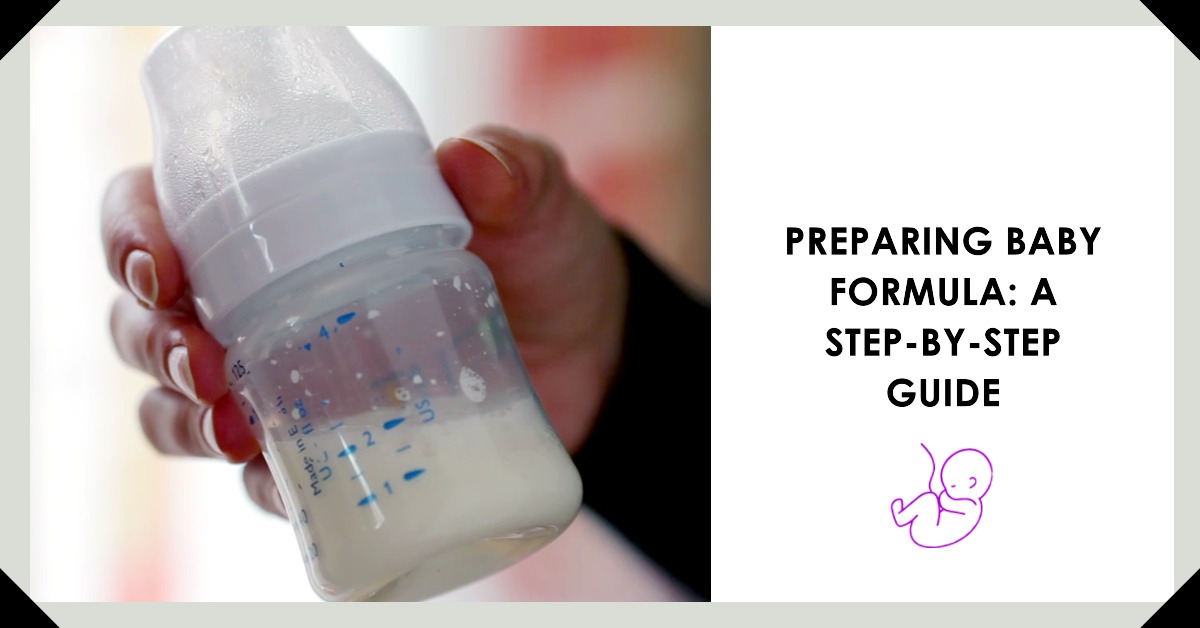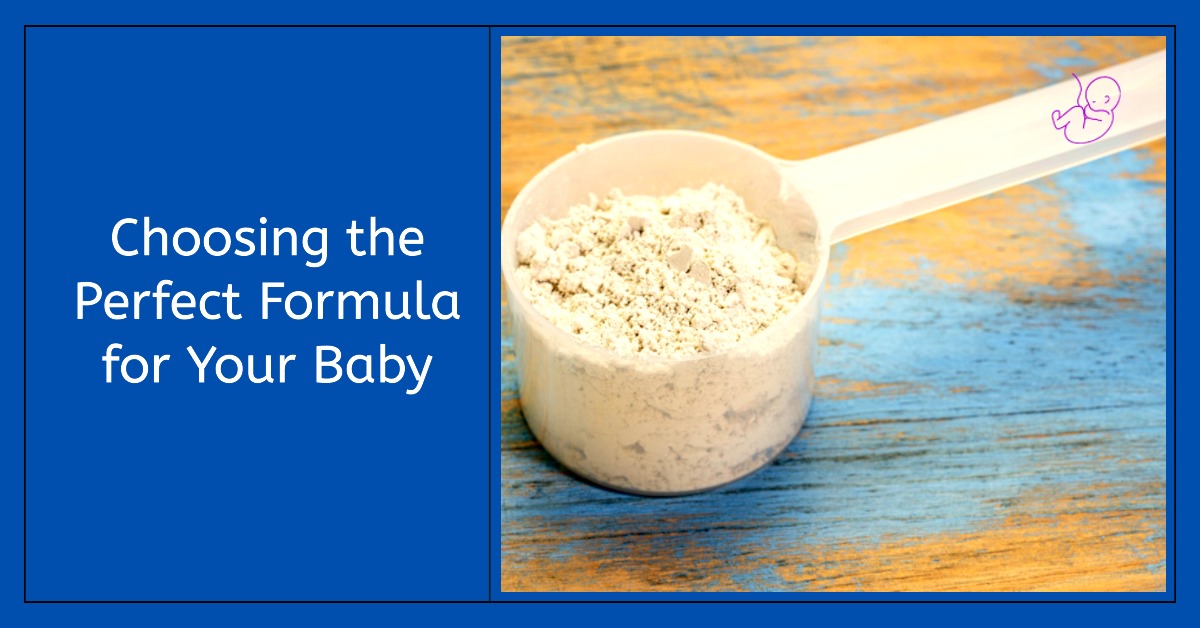
When you become a parent for the first time, many questions arise, and many of them are related to the nutrition of your little one.
Whether you are partially breastfeeding or exclusively formula feeding, choosing the best infant formula for your baby is one of the most important decisions you will make as a parent at this stage.
This article has been written to help you understand infant formulas and provide a step-by-step guide to help you make the best decision possible.
Let’s go for it!
*Want to compare formulas? Check out Formula Comparison Chart
Step By Step Guide: How To Choose Baby Formula
Step 1: Understand the Basics. It’s essential to familiarize yourself with the primary ingredients found in baby formulas:
- Carbohydrates: Lactose is preferred as it mirrors breast milk. But if sensitivity arises, consider starches or maltodextrin, and avoid corn syrup solids if possible.
- Protein: A 60:40 whey-to-casein ratio is ideal, and whole milk is better than skimmed. Goat milk formula is better than cow milk formula for most babies.
- Fats: Coconut oil is the best vegetable oil, followed by organic palm oil. Avoid soy oil and palm olein if possible.
- Vitamins & Minerals: Most formulas are fortified, so you should not worry about them.
- Probiotics & Prebiotics: Choose Formulas with HMOs or GOS. Probiotics are not necessary but can be beneficial for some babies.
- Iron-Fortification: Do not worry about iron fortification; most formulas contain the amount your baby needs. It’s essential to start with solid foods after the 6 month mark if you can.
- DHA & ARA: Always choose formulas with DHA and ARA (Omega 3 & 6)
- Extra Benefits: Organic formulas are always recommended if possible. MFGM (Milk Fat Globule Membrane) and HMOs are also recommended.
Step 2: Start Simple If you’re starting fresh and unaware of your baby’s special needs:
- Choose an organic goat or cow milk formula. Brands like Kendamil Goat, Nannycare, Holle Goat, Kendamil Organic, and Bobbie are excellent starting points.
Step 3: Monitor Your Baby Watch out for symptoms such as:
- Reflux
- Constipation
- Signs of lactose intolerance
- Signs of protein allergies
Step 4: Consult a Pediatrician If your baby doesn’t seem content with the chosen formula:
- First response: Seek advice from a pediatrician immediately.
Step 5: Lactose Concerns Can’t see a pediatrician immediately and suspect lactose issues?
- Shift to a lactose-free formula.
Step 6: Persistent Issues If problems persist post the lactose-free switch:
- Move to a hydrolyzed, lactose-free formula.
Step 7: Constant Observation Always monitor your baby for any symptoms or discomfort, and adjust the formula accordingly. Your baby’s reactions will guide you in determining their specific needs.
Step 8: Flexibility and Patience Remember, each baby is unique. What works for one might not work for another. It might take some trial and error, but with patience and observation, you’ll find the perfect formula to ensure your baby’s health and happiness.
Before you apply this step-by-step guide, you must understand the different formula types. The rest of the article will give you the knowledge to choose the best formula.
Infographic: Choosing the Right Formula

Formulas Based on Primary Ingredient
There are three main types of baby formulas classified according to their primary ingredient: Cow’s Milk-Based, Soy, and Goat’s Milk formula, all offering unique qualities suited for different infant needs.
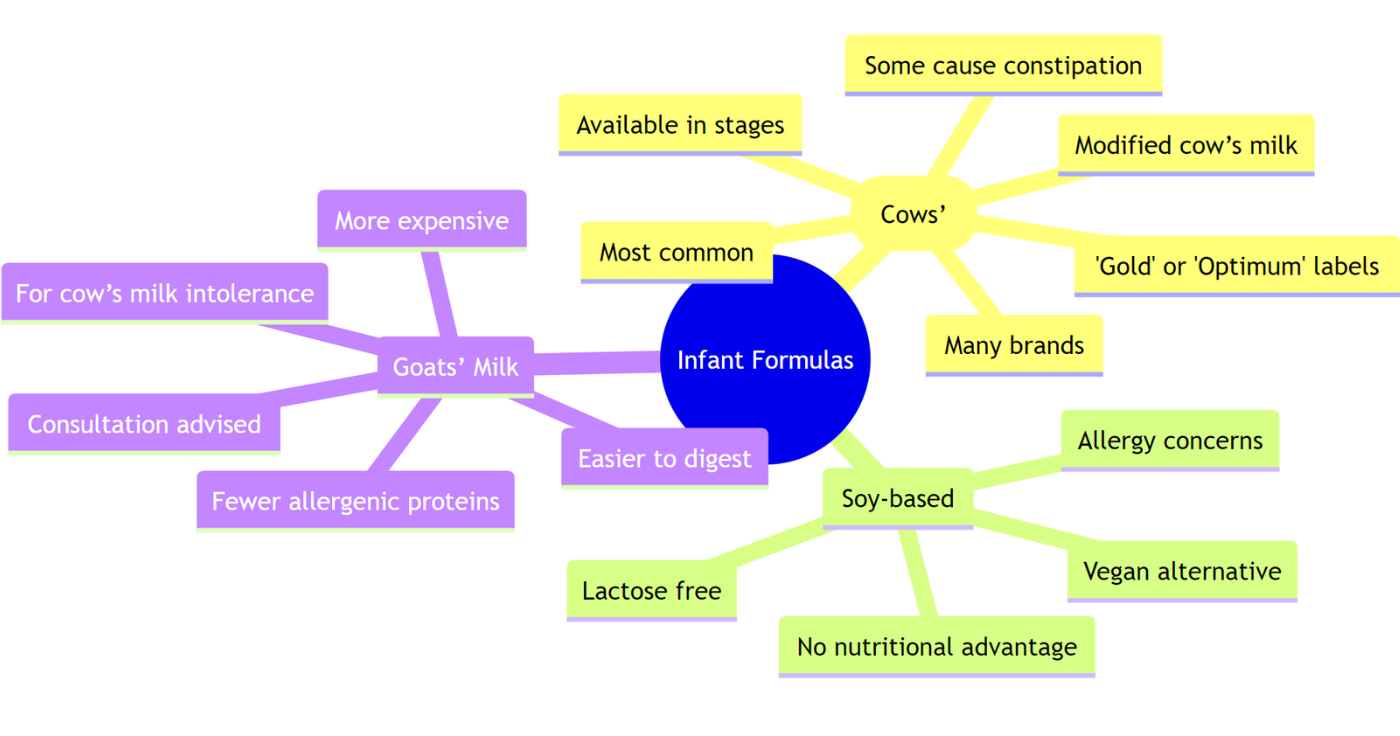
Cow’s Milk-Based Infant Formula
Cow’s milk-based infant formula dominates the market by making up 80% of all formulas sold, but it’s more than just popularity that sets them apart. These formulas have been tailored to meet the nutritional needs of infants with a balance of whey and casein proteins in a ratio similar to mother’s milk.
The protein from cow’s milk used in these formulas undergoes special treatment to make it easily digestible for young systems, enhancing their ability for nutrient absorption. Moreover, these are fortified with essential vitamins and iron to ensure optimal health growth.
Soy Infant Formula
Soy infant formula serves as a milk substitute for babies with special dietary needs or allergies to cow’s milk. Packed with soy protein and carbs like glucose or sucrose, this formula stands out among the plant-based alternatives for its hypoallergenic properties.
While an excellent non-dairy option, soy formulas are inappropriate for pre-term infants, those with kidney complications, or underweight babies due to their unique nutritional requirements.
If your child cannot tolerate breast milk or traditional cow’s or goat’s milk formulas, consider soy-based formulations explicitly designed for allergy-sensitive infants.
Goat’s Milk Baby Formula
Goat’s milk baby formula is a popular alternative to cow’s milk or soy protein-based formulas. Babies often tolerate it better, resulting in fewer upset stomachs or allergic reactions.
*Read: Goat vs Cow’s Milk Formulas | Benefits of drinking goat milk formula
The nutritional content of this formula includes similar amounts of fat, protein, and carbohydrates compared to what’s found in cow’s milk formula, fulfilling the vital nutritional requirements.
Goat’s milk baby formula is a healthy choice for many infants and has many benefits related to digestibility.
Formulas Based on Protein Composition
Understanding the protein composition in baby formulas is pivotal, as it directly impacts your baby’s digestion and overall growth. Formulas come with different types of proteins: standard, partially hydrolyzed, or fully hydrolyzed.
Standard protein formula uses full-size proteins, which may be more challenging for some infants to digest.
Partially Hydrolyzed Protein Formula breaks down proteins into smaller sizes for easier digestion.
Fully Hydrolyzed Protein Formula further simplifies proteins into their basic components, ideal for babies with protein allergies or sensitive tummies.
*Learn more: Partially vs Extensively Hydrolyzed Formulas

Standard (full-size) Protein Formula
Standard protein formulas are typically made from cow’s milk. The process to make these involves heating the proteins so that they’re more accessible for a baby’s sensitive digestive system to break down.
In some cases, babies have sensitivities or allergies to cow’s milk proteins, making digestion difficult. If this occurs, alternative options like soy-based formula are available as they use soy protein isolate instead of cow’s milk proteins.
Partially Hydrolyzed Protein Formula
Partially hydrolyzed protein formula breaks down proteins into smaller parts during the hydrolyzation process. Babies often find these formulas easier to digest, making them an excellent option for those struggling with colic, regurgitation, or constipation.
The term ‘predigested‘ is frequently used interchangeably with partially hydrolyzed due to its simplified protein structure miming the natural digestion process. This formula is usually made from whey protein and has been shown to support adequate infant growth effectively.
Fully Hydrolyzed Protein Formula
Fully hydrolyzed protein formula takes standard proteins and breaks them down into smaller, more digestible parts. This meticulous process aids in easy digestion for babies, especially those with specific digestive or immune issues.
Allergy-friendly or hypoallergenic formulas often rely on this form of processing to ensure that infants can safely consume the nutrients they need without any adverse reactions.
Hydrolyzed protein formulas differentiate from their counterparts by the size of proteins present within the mixture. In comparison to partially hydrolyzed protein formulas, fully hydrolyzed versions contain even smaller pieces.
Specialized Baby Formulas
These formulas cater to specific health concerns like reflux or eczema, offer extensively hydrolyzed options for babies with protein allergies, and provide lactose-free alternatives for those intolerant to lactose.
Formulas specifically designed for babies diagnosed with Galactosemia are also available.
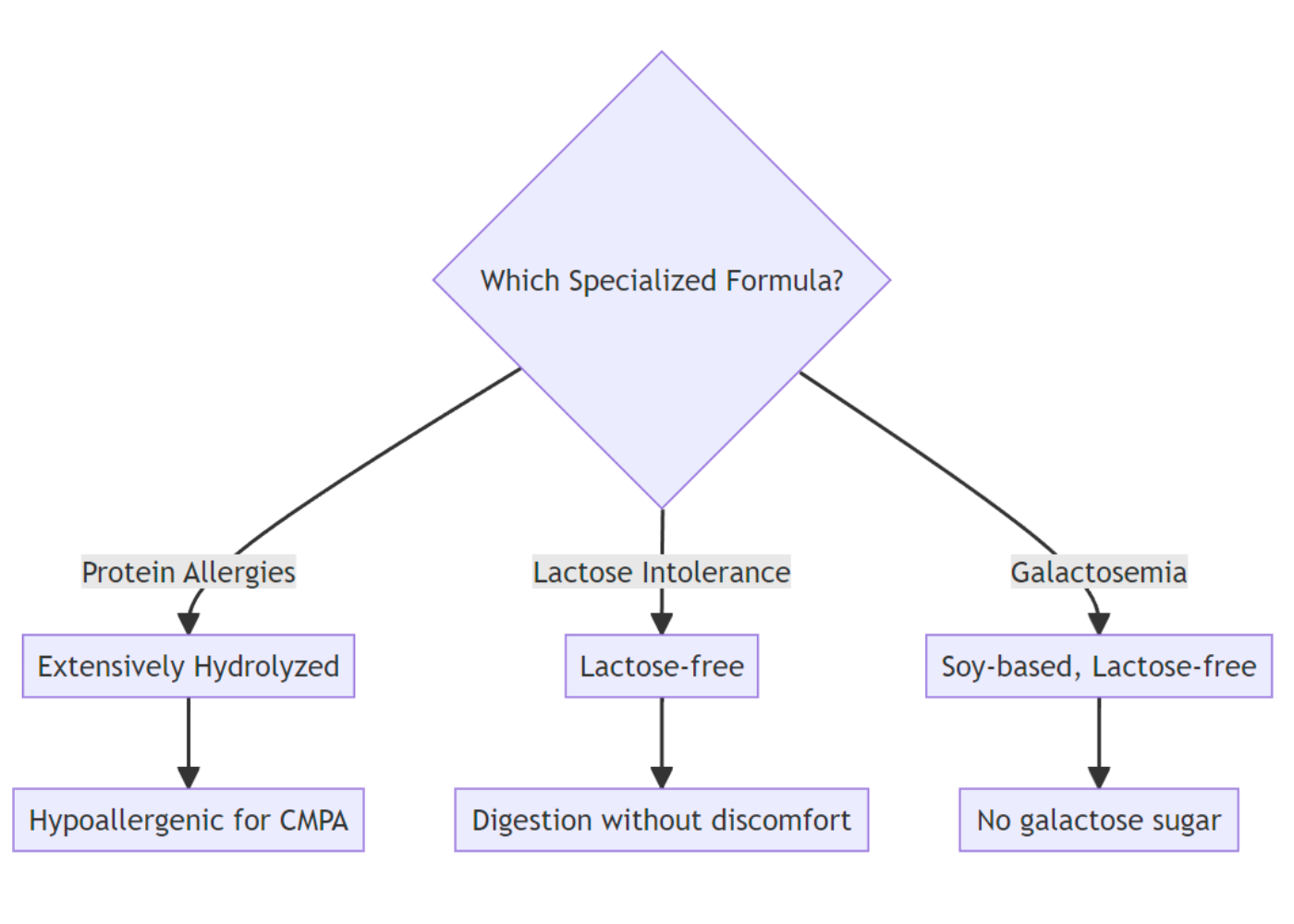
Formulas for Specific Health Considerations (reflux, constipation, eczema)
Certain infant formulas treat specific health issues like reflux, constipation, and eczema. These specialized baby formulas are:
- Formulas for reflux: These consist of special ingredients that thicken the formula, preventing it from being easily regurgitated.
- Formulas for constipation: Some formulas contain a higher amount of certain types of carbohydrates like lactose, which is known to soften stools.
- Formulas for eczema: Infants with eczema can benefit from hydrolyzed or amino acid-based formulas as these proteins are broken down and less likely to stimulate an immune response.
Extensively Hydrolyzed Formulas (for babies with protein allergies)
As we said above, extensively or fully hydrolyzed formulas step forward as a solution for infants with protein allergies.
Babies with CMPA benefit from these hypoallergenic formulas as they provide complete nutrition while circumventing any adverse reactions. Research affirms the effectiveness of extensively hydrolyzed whey formulas in catering to infants holding a history of cow’s milk allergy.
Careful!: partially hydrolyzed variants generally lack the ‘hypoallergenic’ label and do not address severe protein allergies in some babies effectively.
Lactose-free formulas (for lactose intolerance)
Lactose-free formulas are a game-changer for babies struggling with lactose intolerance. Such infants often have difficulty digesting lactose, the primary sugar in cow’s milk.
Their sensitive tummies might not produce enough of an enzyme called lactase that breaks down this milk sugar, resulting in gastrointestinal discomfort.
Lactose-free formulas come in various types and cater to the specific nutritional needs of babies unable to tolerate lactose.
Despite lacking this common carbohydrate source, these alternative baby food products continue offering essential nutrition to your little one.
Formulas for Babies with Galactosemia
Infants with galactosemia have special dietary needs, including a critical need for lactose-free nutrition. The reason is their body’s inability to process the galactose sugar found in lactose.
Specialized baby formulas come into play, catering to these infants’ unique nutritional requirements. While numerous formula options are available today, it’s essential to differentiate that soy-based infant formulas take precedence for babies with galactosemia as they don’t contain lactose, providing an ideal solution for their disease management and wellness journey.
Are Vegetarian & Vegan Formulas Safe?
Yes, they are. Parents with particular dietary concerns can opt for vegetarian and vegan baby formulas. These plant-based options, like soy formula, present an excellent alternative to traditional cow’s milk options.
Pediatric professionals give the green light to these choices as they meet all the nutritional requirements of infants. Vegans often worry about certain nutrients in animal products, such as DHA.
However, many vegetarian and vegan formulas use algae oils or marine algae as a source of essential fatty acids like DHA, ensuring proper infant nutrition even without animal-based ingredients.
Kendamil formula is an example of a unique vegetarian formula.
Strict vegan diets aren’t recommended for babies; so make sure to talk to a healthcare professional before going vegetarian or vegan with your baby.
Is Organic Formula Worth It?
In our opinion, it is the way to go.
Organic baby formula offers a clean, nutritious option for parents who prefer to feed their babies with organically sourced ingredients. These formulas are precisely designed to mimic breast milk’s nutritional composition, providing essential nutrients without the addition of synthetic fertilizers or pesticides commonly associated with conventional farming methods.
The benefits of organic formula extend beyond just being an excellent breastfeeding alternative; it offers peace of mind knowing your infant is consuming safe and healthy meals every day.
Organic Formula Brands include Kendamil Organic, Bobbie, Holle, Earth’s Best, Hipp, and Happy Baby Organic.
What are the Most Important Ingredients in Baby Formula?
1. Carbohydrates: Importance of Lactose as the Primary Carbohydrate Source
Lactose is the recommended and primary carbohydrate in most baby formulas because it closely mimics breast milk. However, if your baby has lactose sensitivity or intolerance, look for alternatives like starches, maltodextrin, or corn syrup solids as a last resort.
Learn more: Starch in baby formula | Maltodextrin in baby formula | Corn Syrup in baby formula
2. Protein: Understanding Protein Sources and their Impact
The ideal formula should have a 60:40 whey-to-casein ratio. Prioritize formulas that use whole milk over skimmed milk. Consider the protein source too: we recommend starting with goat milk for babies without CMPA. If not suitable, explore partially or extensively hydrolyzed formulas based on your baby’s needs.
3. Fats: Essential Fatty Acids and their Role
Choose formulas with quality vegetable oils such as coconut, rapeseed, and canola. If possible, avoid non-organically grown palm oil.
Learn more: Vegetable oils in formula | Palm Oil in baby formula
4. Vitamins & Minerals: Key Nutrients to Look Out For
Most formulas on the market today are fortified with essential vitamins and minerals, so this isn’t usually a primary concern.
5. Probiotics & Prebiotics
Opt for formulas enriched with prebiotics like galacto-oligosaccharides, fructo-oligosaccharides, polydextrose, or the superior HMOs (human milk oligosaccharides). While less common, probiotics like bifidobacteria and lactobacilli are beneficial additions.
Learn more: Prebiotics and probiotics in formula
6. Iron fortification and its significance
Standard formulas are typically adequate in iron for babies aged 0-6 months. As babies transition to solid foods post 6 months, additional iron fortification isn’t always necessary unless recommended by a pediatrician.
Learn more: Iron in formula
7. DHA and ARA
Ensure the chosen formula contains Omega 3 and 6, which are vital for infant development. Always opt for formulas enriched with these fatty acids.
Learn more: DHA and ARA in formula
Frequently Asked Questions
Let’s finish this blog post with some commonly asked questions.
How to Know Which Formula is Best for Your Baby?
Unfortunately, no one answer is always true.
The best formula for your baby will be the one that he or she can digest well and has the most pure quality ingredients.
Don’t go crazy about finding the best of the best, either. If your baby takes it with pleasure and has no digestive problems, you can be sure you have made the right choice.
Closest Formula to Breast Milk: Myth or Reality?
Infant formula makers worldwide continually strive to create the closest formula to breast milk. Their endeavors are triggered by the irreplaceable nutritional profile of human milk, which is ideally suited for a baby’s growth and development.
However, despite advancements in science, no infant formula can perfectly mimic the composition of breast milk.
Scientific research powers these improvements in infant formulas. It guides manufacturers in adding beneficial ingredients like probiotics, prebiotics, and significant supplements such as DHA and ARA.
Even with these enhancements, though, these formulas are derived from different primary ingredients – cow’s milk or soy – unlike natural breastmilk. The long-term effects of feeding babies with various formulas compared to breastfeeding are still under investigation.
What should you do if your baby disagrees with their formula?
If your baby has problems after consuming formula, you should switch to a new one as soon as possible.
Many official recommendations say that the switch should be made slowly, but science has nothing against making the switch directly, so don’t be afraid to do it.
Conclusion and Final Thoughts
We hope this article has helped you to understand the world of infant formula better.
Remember that what works for one baby doesn’t have to work for yours, so follow the recommendations in this post, be perseverant and optimistic, and you will be able to choose the best formula for your baby.
If you have any specific questions about your baby’s nutrition, leave us a comment or visit our homepage and fill out our consulting form, and we will be happy to help you for free.
Happy choosing!
We’re Maria and Alberto, a married couple and educators who are nutrition enthusiasts. Even before we had kids, we were already crazy about nutrition.
We’d read scientific articles, watch videos from nutritionists, and spend hours listening to nutrition podcasts.
Today, we continue doing this, but in a different way, as we’ve learned to sift through the noise and trends. Nutrition, like any other field of knowledge, the more you read and learn, the more you develop a comprehensive understanding of reality, and that’s what has happened to us.
Before having our first child, we focused on learning everything we could about child nutrition, using the same techniques we had already employed, backed by our extensive knowledge in nutrition.
Our mission is to help other parents with their children’s nutrition, to help them become the best versions of themselves.
If we are what we eat and drink, which is absolutely true, let’s do it right!


